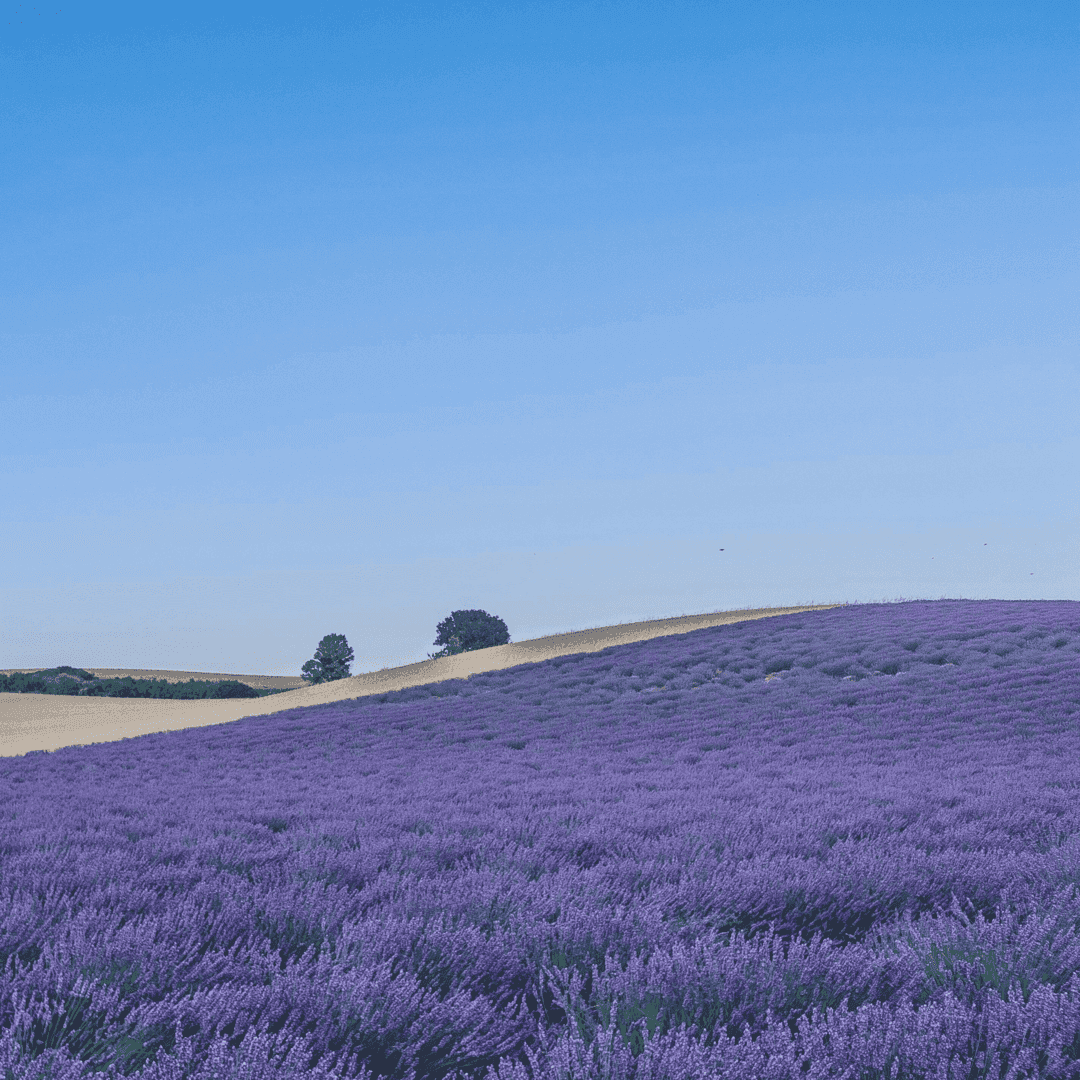
Mnogima je poznato kakve benefite nudi lavandino eterično ulje.
Znamo da se koristi u proizvodnji prirodne kozmetike, u proizvodnji sveća i za aramaterapiju.
A da li znate kako se dobija eterično lavandino ulje?
„Destilacija je proces i način razdvajanja tečne smeše hemijskih jedinjenja fizičkim procesom isparavanja, a potom kondezovanja sastojaka smeše. Koristi se u cilju izolovanja ili prečišćavanja jednog ili više jedinjenja koji se nalaze u smeši.„
Tako je, eterično lavandino ulje dobijamo u procesu destilacije svežeg lavandinog cveta.
U ovom tekstu pokušaćemo da Vam detaljije približimo kako ceo proces izgleda.
Lavender distillation process
If you have ever steamed some vegetables, you can probably understand how the distillation process is performed.
Često imamo tendenciju da posmatramo neki finalni proizvod i da se divimo njegovoj lepoti, a da pri tom zanemarujemo nauku, znanje i trud koji se kriju iza svega toga.
To get a quality product, besides knowledge, a little creativity and skill is also needed.
Za proces destilacije potrebno je obezbediti određenu aparaturu, koja se u zavisnosti od količine biljnog materijala potrebnog za destilaciju razlikuje u veličini i gabaritima, ali je proces u suštini isti.
Osnovna aparatura potrebna za vršenje destilacije sadrži:
- Kazan
- Kondenzator
- Gorionik
- Dovod hladne vode
- Odvod vruće vode
- Levak za radvajanje destilata
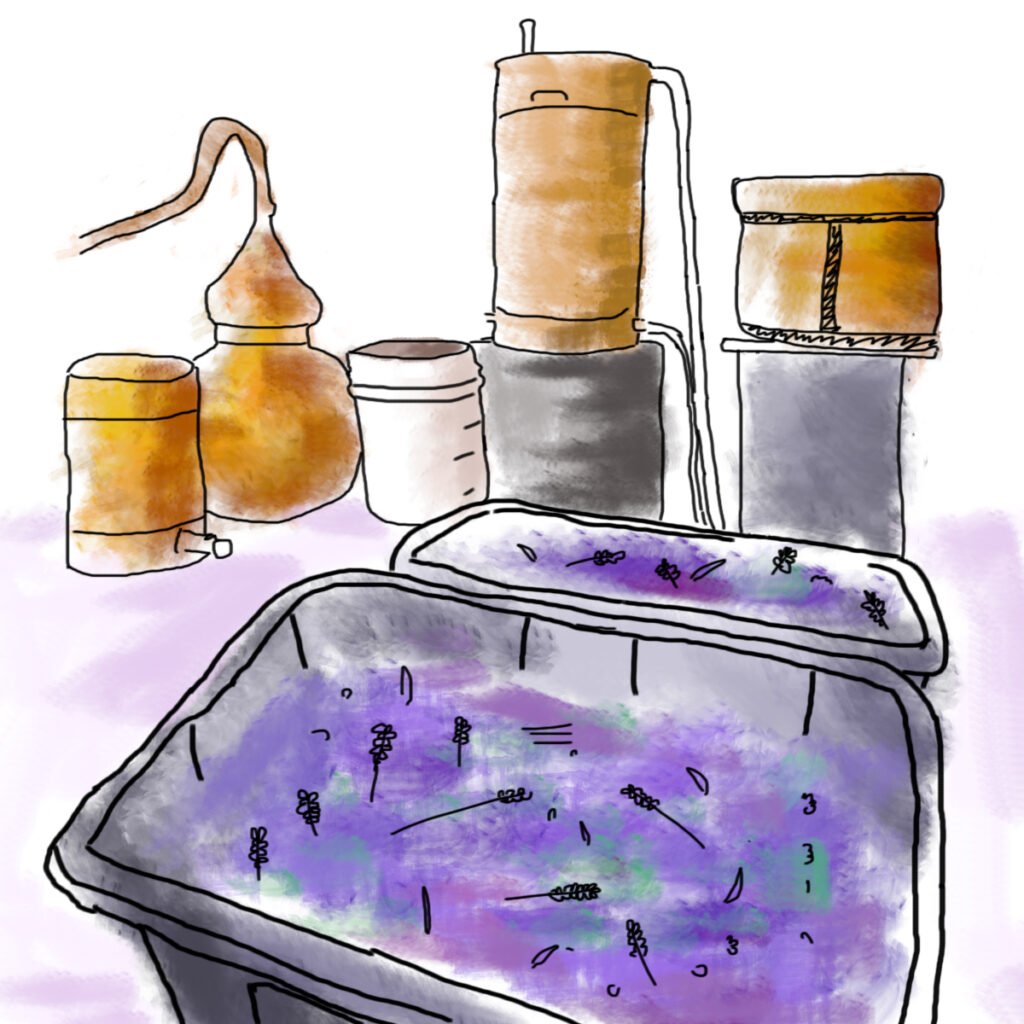
Preparation of the distillation process
Obtaining lavender oil takes place in a process called steam distillation.
Besides this method of distillation, there is also so-called water distillation. Steam distillation is much better than water distillation, because with water distillation reflux occurs, i.e. loss of essential oils in waste water. Therefore, water distillation should be used only if it is necessary, such as for distillation of delicate flowers, like rose flowers or if the plant material is in powder form (dried sandalwood).
Plant material in steam distillation does not come into contact with water, so this method of distillation is far more efficient and ensures a higher quality final product.
For the steam distillation process we need a boiler or some similar copper vessel. The upper partition inside the boiler, in which the plant material is located, needs to be adjusted to the appropriate height depending on the size of the boiler. In the case of a 300-liter boiler, the partition is adjusted to 25 cm from the bottom of the boiler.
After that, it is necessary to fill the boiler with water up to the partition with the plant material.
The lavender that will be used in the distillation process is placed above the partition, in this way it is ensured that the plant material does not touch the water or get damaged due to high temperatures.
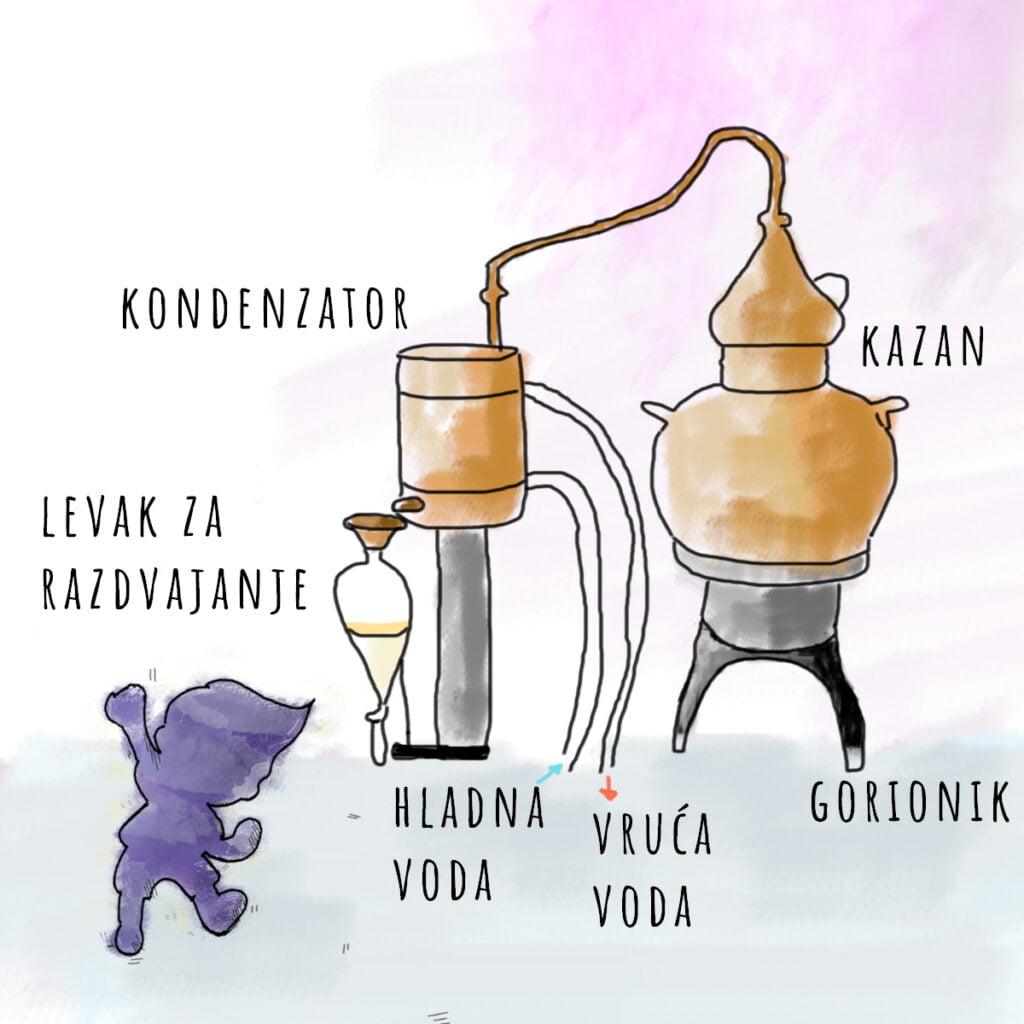
How to fill the distillation boiler
Before setting up the entire distillation apparatus, lavender stems need to be cut and chopped, in order to extract the largest amount of essential oil from the plant material.
For a 60-liter boiler, 10 kilograms of fresh lavender is needed. For a 300-liter cauldron you will need 50 kilograms of plant material.
10 kilograms of fresh lavender flowers can be harvested from 6 to 12 lavender bushes depending on the variety and age.
Lavender for distillation is usually harvested at the end of the season, when it is at the end of full bloom. When the plant is in full bloom, then the most essential oil is present in the flower itself.
When filling the boiler with plant material, it is necessary to distribute and pack the raw material well and avoid the occurrence of "air pockets". When filling, lavender is placed in the space between the limiters to the top of the cauldron.
When the cauldron is properly filled, it is necessary to lower the lid and connect the cauldron to the condenser and slowly turn on the burner under the cauldron.
The magic begins.
Distillation process
This is the part when the entire magic unfolds before our eyes. Just like when vegetables are steamed, the whole essence of the distillation process is that by boiling water from the bottom of the boiler, water vapor is created that passes through the plant material that is in the boiler.
While water vapor passes through the lavender that is in the boiler, under the pressure that is created in the boiler, the plant material releases essential oil.
Did you know that there is a higher concentration of essential oil in lavender buds than in the flower itself?
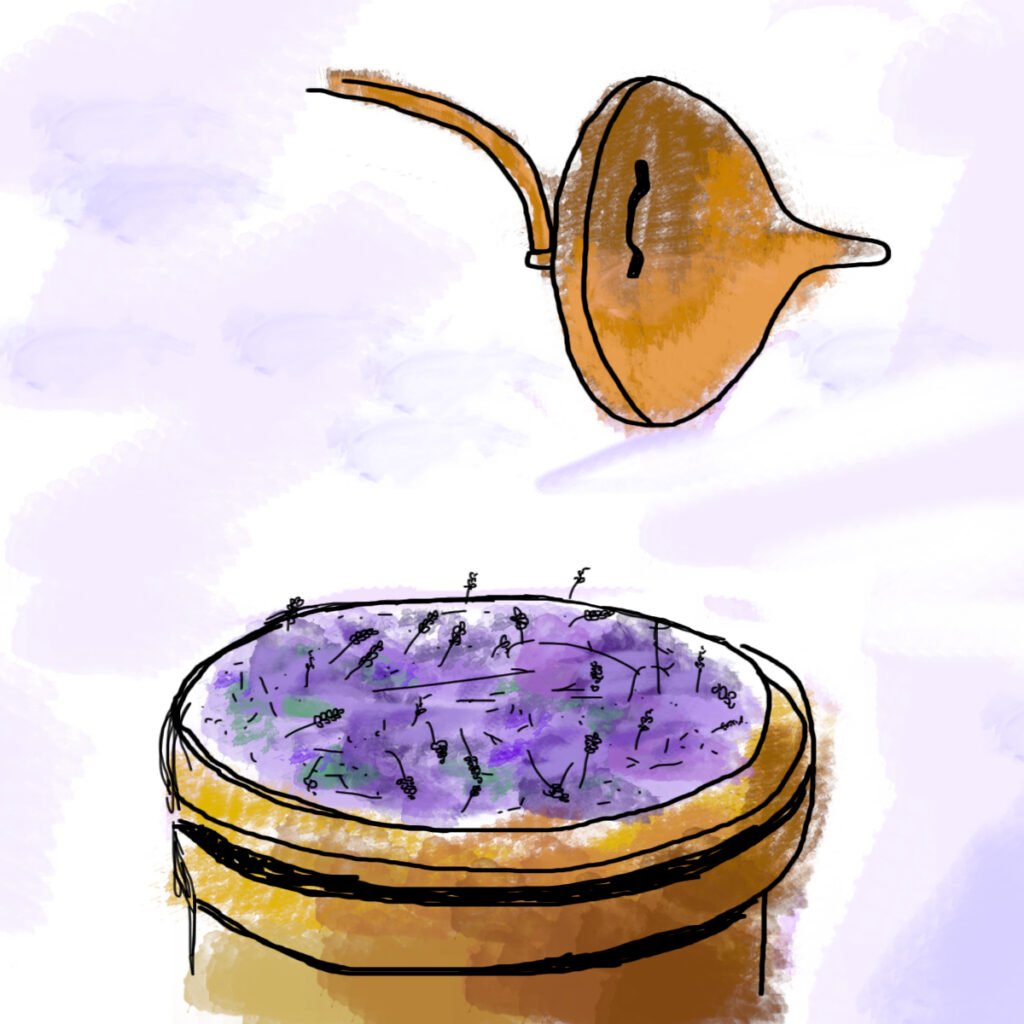
Condensation
During the distillation process, the smaller vessel that connects to the boiler is called a condenser. The condenser is the part that contains a metal pipe through which water vapor passes that contains particles of essential oil. In the condenser, the water vapor is cooled.
The pipe inside the condenser is bent in such a way that it forms a coil, so that the water vapor can be cooled more efficiently and faster. It is important to note that the condenser is filled with cold water, which needs to be changed during the process.
In this way, water vapor that is in gaseous state, passing through the coil, transitions back to liquid state.
The water with which the condenser is filled, during the process gets heated, and thus we get hot water that is discharged through a valve at the top of the condenser.
The hot water is then replaced with cold water, so that the water vapor condensation process can continue uninterrupted.
After the water vapor returns to liquid state through condensation, the liquid droplets go into a separation funnel, where hydrolat and essential oil will be collected.
Separation of oil and hydrolat
This part of the distillation process is quite simple, but it is often possible to make some mistake.
When essential oil and water come out of the condenser, they are placed in a separation funnel. It is generally known that oil and water cannot mix, and there is nothing new there.
Have you wondered why oil floats on the surface of water?
If you think that water is heavier than oil, then that is not correct.
Water is denser than oil and therefore water sinks to the bottom. The second reason is that the bonds between water molecules are much stronger, and oil molecules cannot break them.
Essential oils, like other oils, have a property called "hydrophobia", i.e. the inability to mix with water.
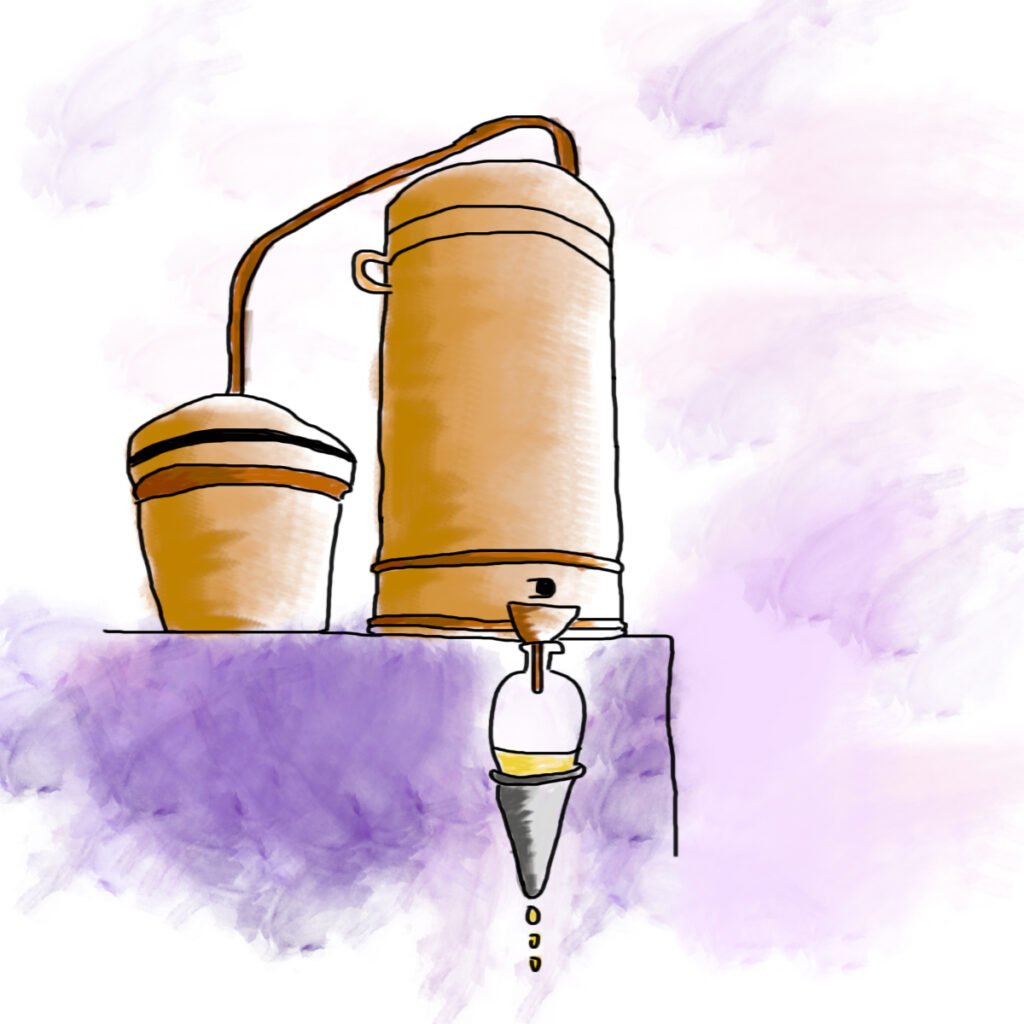
Sakupljanje i odvajanje eteričnog ulja
Količina dobijenog eteričnog ulja tokom procesa destilacije zavisi od raznih faktora.
Lavender varieties such as Lavandula X Intermedia or lavandin yield a lot of essential oil. The Grosso variety, as one of the popular varieties, can also have quite a good amount of oil.
By distilling the variety Grosso, can be expected 225 – 300 ml essential oil, by distillation 12 kilograms plant material in a boiler of 60 liters.
Variety Lavandula Angustifolia (English lavender) does not have a large amount of essential oil, but its oil is the most sought after and most valuable.
By distilling this variety it is expected to obtain 30 – 120 ml from 12 kilograms plant material.
Essential oil obtained from the Grosso variety or from lavandin contains a lot of camphor. This is of course nothing bad, it just has a different application.
English lavender essential oil is most commonly used for its medicinal properties in cosmetics and aromatherapy, while essential oils of other lavender varieties are used in perfume production.
Šta koristiti? Bakar ili nerđajući čelik?
Why do we use copper vessels during the distillation process?
Korišćenjem bakra u procesu destilacije, eterično ulje ima mnogo svežiji, prirodniji i jači miris.
This is possible because, by using copper elements we remove sulfur that can be found in small amounts in the plant material itself.
A simple scientific explanation would be, copper molecule has 2 positive ions, while sulfur has 2 negative ions. Through chemical reaction, these molecules combine, resulting in a turquoise green colored matter at the bottom and on the walls of the boiler, which we call copper sulfate. At the end of the distillation process, copper sulfate is very easily cleaned with ordinary water, and does not end up in our essential oil packaging.
Šta je hidrolat?
Lavender hydrosol tehnički nije ulje, ali hidrolati i eterična ulja se obično grupišu zajedno jer svoju primenu imaju u kozmetici i u aromaterapiji.
Hydrolat is a substance that is also called floral water.
Hidrolat se dobija kao nusproizvod prilikom procesa destilacije eteričnog ulja.
Lavender hydrolat finds its application in various perfumes or air fresheners, as well as in cosmetics.
Conclusion
Iako možda naporan i posao koji zahteva mnogo truda i koncentracije, destilacija lavandinog ulja je nešto u čemu veoma uživamo.
Činjenica da se ogroman trud na kraju pretvori u bezbojnu tečnost magičnog mirisa i spakuje se u sasvim malu bočicu sa etiketom je nešto što nam stavlja osmeh na lice i deluje nestvarno.
Ukoliko Vas ovaj tekst bude dovoljno zainteresovao, možete ovaj proces isporbati i u kućnim uslovima i započeti možda jedan sasvim neobičan i zabavan hobi.
Uživajte!




Leave a Reply